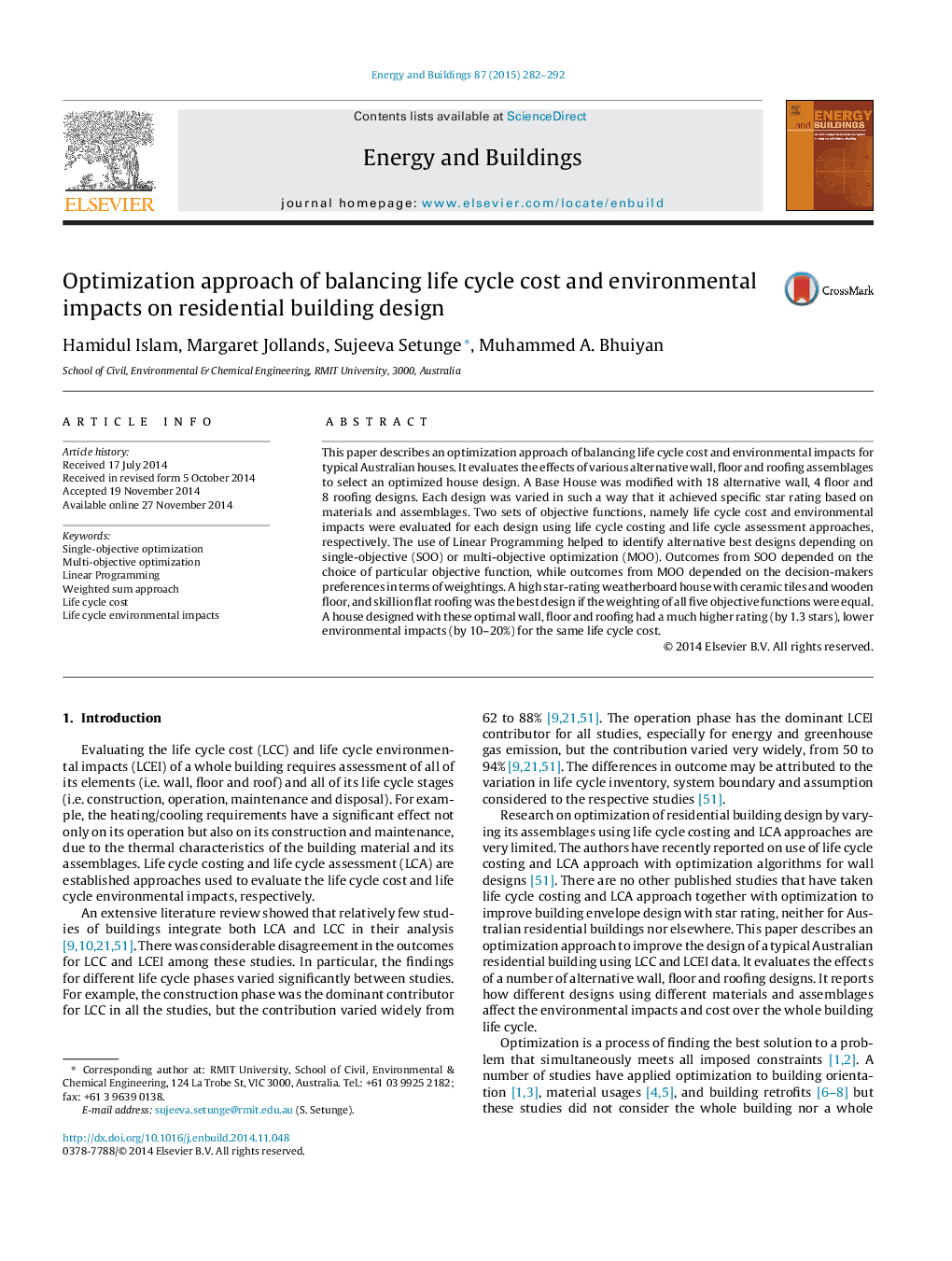| Article ID | Journal | Published Year | Pages | File Type |
|---|---|---|---|---|
| 6732487 | Energy and Buildings | 2015 | 11 Pages |
Abstract
This paper describes an optimization approach of balancing life cycle cost and environmental impacts for typical Australian houses. It evaluates the effects of various alternative wall, floor and roofing assemblages to select an optimized house design. A Base House was modified with 18 alternative wall, 4 floor and 8 roofing designs. Each design was varied in such a way that it achieved specific star rating based on materials and assemblages. Two sets of objective functions, namely life cycle cost and environmental impacts were evaluated for each design using life cycle costing and life cycle assessment approaches, respectively. The use of Linear Programming helped to identify alternative best designs depending on single-objective (SOO) or multi-objective optimization (MOO). Outcomes from SOO depended on the choice of particular objective function, while outcomes from MOO depended on the decision-makers preferences in terms of weightings. A high star-rating weatherboard house with ceramic tiles and wooden floor, and skillion flat roofing was the best design if the weighting of all five objective functions were equal. A house designed with these optimal wall, floor and roofing had a much higher rating (by 1.3 stars), lower environmental impacts (by 10-20%) for the same life cycle cost.
Related Topics
Physical Sciences and Engineering
Energy
Renewable Energy, Sustainability and the Environment
Authors
Hamidul Islam, Margaret Jollands, Sujeeva Setunge, Muhammed A. Bhuiyan,
